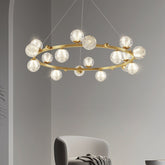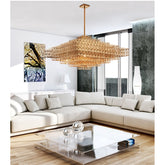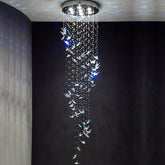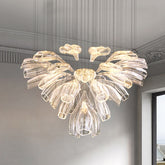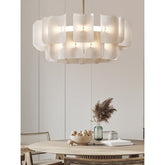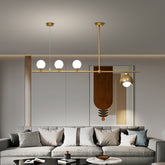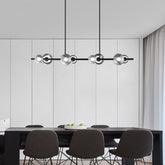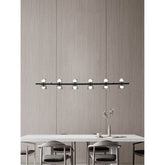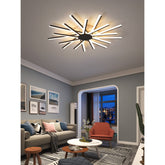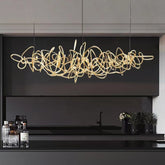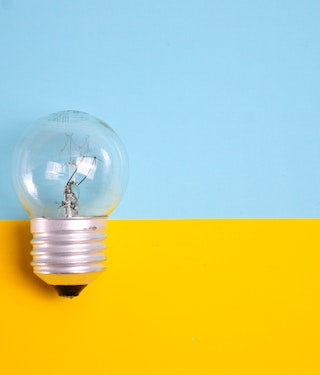How to Use Light Therapy in Your Home Decor: Decorations for Mental Health
In the hustle and bustle of modern life, creating a home environment that fosters mental health has become increasingly essential. One effective and scientifically supported way to enhance mental health at home is through light therapy. This blog will guide you through the principles of light therapy and how you can seamlessly incorporate it into your home decor to improve your mood, boost your energy, and create a calming sanctuary in 2024 & beyond.
Understanding Light Therapy
Light therapy, also known as phototherapy, involves exposure to specific wavelengths of light using specialized lamps or light boxes. This technique is widely used to treat Seasonal Affective Disorder (SAD), a type of depression that occurs at certain times of the year, usually in winter when daylight hours are shorter. However, the benefits of light therapy extend beyond SAD, aiding in the regulation of circadian rhythms, improving sleep, and enhancing overall mood and mental well-being.
How Light Therapy Works
Light therapy works by stimulating photoreceptors in the eyes, which in turn influences the hypothalamus, a part of the brain that regulates mood, sleep, and energy levels. Exposure to bright light can increase the production of serotonin, a hormone associated with mood elevation, and regulate melatonin, a hormone that controls sleep-wake cycles.
Scientific Evidence
Numerous studies have demonstrated the effectiveness of light therapy. For instance, research published in the American Journal of Psychiatry found that light therapy is an effective treatment for SAD, with improvements often seen in as little as a week. Another study in JAMA Psychiatry highlighted its benefits for non-seasonal depression and bipolar disorder. Moreover, light therapy has been shown to improve sleep quality and reduce symptoms of jet lag and shift work disorder.
Incorporating Light Therapy into Home Decor
Integrating light therapy into your home decor involves more than just placing a light box in a corner. It’s about creating an environment that promotes positivity through strategic lighting choices. Here are some practical and stylish ways to incorporate light therapy into your home.
1. Choosing the Right Light Sources
When selecting light sources for therapeutic purposes, consider the intensity, color temperature, and placement of the lights.
Intensity
Light intensity is measured in lux. For effective light therapy, you need a light source that emits at least 10,000 lux. This level of brightness is typically found in specialized light therapy lamps but can also be achieved with high-intensity LED bulbs.
Color Temperature
Color temperature, measured in Kelvin (K), affects the ambiance and psychological impact of light. For instance:
- Warm white light (2000K-3000K) creates a cozy and relaxing atmosphere, ideal for living rooms and bedrooms.
- Cool white light (4000K-5000K) mimics daylight and is energizing, perfect for areas where you need to be alert, such as home offices and kitchens.
- Daylight (5000K-6500K) closely resembles natural sunlight and is best for light therapy purposes.
2. Light Therapy Lamps and Boxes
Light therapy lamps and boxes are specially designed to deliver the appropriate intensity and spectrum of light. Here’s how you can integrate them into your decor.
Desk Lamps
Place a light therapy desk lamp in your home office or study area. These lamps are compact, stylish, and can provide the necessary 10,000 lux. Look for designs that complement your decor style, whether it’s modern, rustic, or minimalist.
Floor Lamps
A light therapy floor lamp can serve as both a functional lighting source and a decorative element in your living room or bedroom. Choose a sleek design that blends with your furniture and other decor items.
Wall-Mounted Lights
Wall-mounted light therapy lamps can be strategically placed in areas where you spend a lot of time, such as near your reading nook or beside your favorite armchair. These fixtures save space and add a contemporary touch to your decor.
3. Smart Lighting Solutions
Smart lighting systems, such as Philips Hue or LIFX, offer customizable light settings that can be controlled via smartphone apps or voice assistants. These systems allow you to adjust the brightness and color temperature throughout the day to support your circadian rhythms. For example, you can set a schedule for warm, dim lighting in the evening to prepare for sleep and bright, cool lighting in the morning to help you wake up.
4. Natural Light Optimization
Maximizing natural light in your home is a simple yet effective way to enhance mental well-being.
Window Treatments
Use sheer curtains or blinds that allow maximum daylight to filter in while maintaining privacy. During the day, keep window coverings open to let in as much natural light as possible.
Mirrors and Reflective Surfaces
Strategically place mirrors and reflective surfaces opposite windows to amplify natural light and make the space feel brighter and more open. This can also create an illusion of a larger space.
Skylights and Sun Tunnels
If feasible, consider installing skylights or sun tunnels to bring more natural light into darker areas of your home. These features can dramatically improve the light quality in spaces like hallways, bathrooms, and kitchens.
5. Light Therapy in Specific Rooms
Different rooms serve different purposes, and the lighting should reflect their functions while promoting mental well-being.
Living Room
The living room is a social and relaxing space. Incorporate a mix of ambient, task, and accent lighting. Use light therapy lamps with adjustable settings to create a versatile environment that can be bright and energizing during the day and warm and calming in the evening.
Bedroom
The bedroom is a sanctuary for rest and relaxation. Opt for warm, dimmable lighting that can be adjusted for reading or winding down before sleep. Consider using a wake-up light alarm clock that gradually increases in brightness to simulate a sunrise, helping you wake up more naturally.
Home Office
For the home office, use bright, cool white light to enhance concentration and productivity. A desk lamp with light therapy capabilities can help you stay alert and focused during work hours.
Kitchen and Dining Area
The kitchen and dining area benefit from bright, functional lighting. Use cool white or daylight bulbs to create an inviting and energizing space for cooking and dining. Pendant lights or under-cabinet lighting can also add a decorative touch.
6. Creating a Light Therapy Schedule
Incorporating light therapy into your daily routine is crucial for reaping its mental health benefits. Here’s a suggested schedule:
- Morning: Start your day with 30 minutes of exposure to a 10,000 lux light therapy lamp to boost your mood and energy levels.
- Afternoon: Ensure your home office or workspace is well-lit with bright, cool white light to maintain alertness.
- Evening: Gradually transition to warmer, dimmer lighting to prepare your body for sleep. Avoid bright, blue light from screens at least an hour before bedtime.
7. DIY Light Therapy Projects
For those who enjoy DIY projects, here are some creative ways to incorporate light therapy into your home decor:
Light Therapy Artwork
Create artwork that incorporates LED lights. Use a canvas and outline a design with LED strips, ensuring the lights are bright enough to provide therapeutic benefits. This can be a unique focal point in your living room or bedroom.
Light Therapy Shelves
Install LED light strips on the underside of floating shelves. These can provide both illumination and a therapeutic light source. Place these shelves in your living room or home office for added decor and functionality.
Light Therapy Headboard
Integrate LED light strips into your bed's headboard. This can create a soothing backlight that can be dimmed in the evening and brightened in the morning, supporting your sleep-wake cycle.
Final Thoughts
Using quality light therapy methods into your home decor is a practical and aesthetically pleasing way to enhance mental and physical health in the long run. By carefully selecting and placing light therapy lamps, optimizing natural light, and using smart lighting solutions, you can create a home environment that supports your mental health year-round. Remember, the key is to create a balance of light that aligns with your daily activities and circadian rhythms, ensuring that your home is not only beautiful but also a sanctuary for your mind and body. Make the best out of your home decor!












































































































